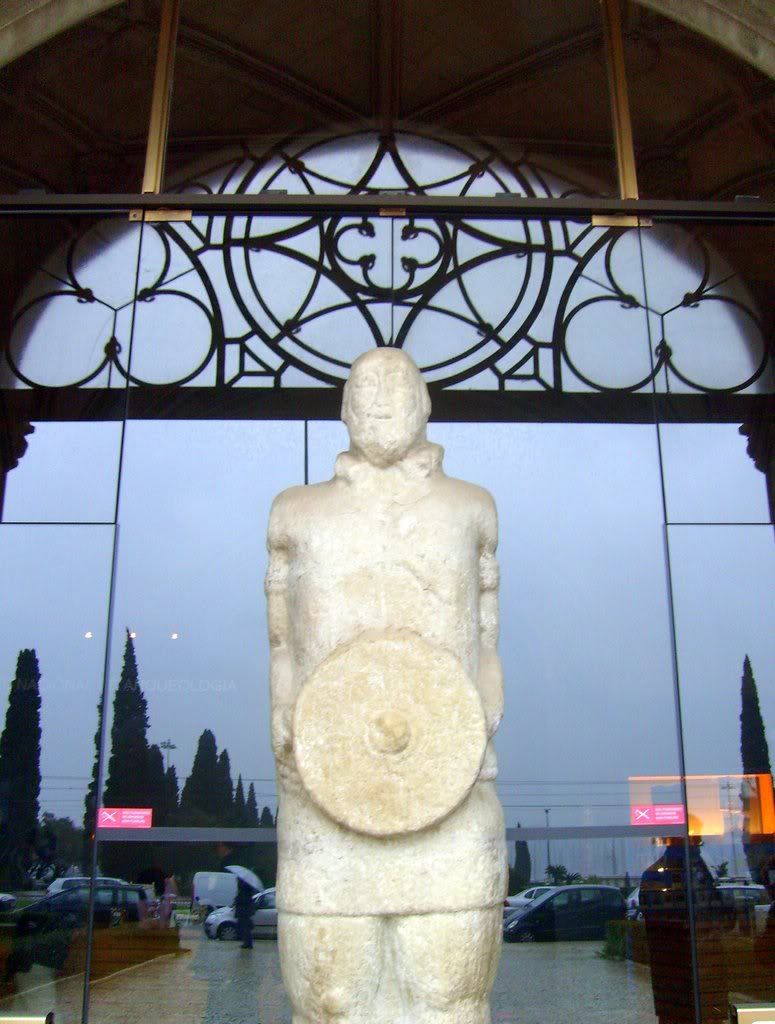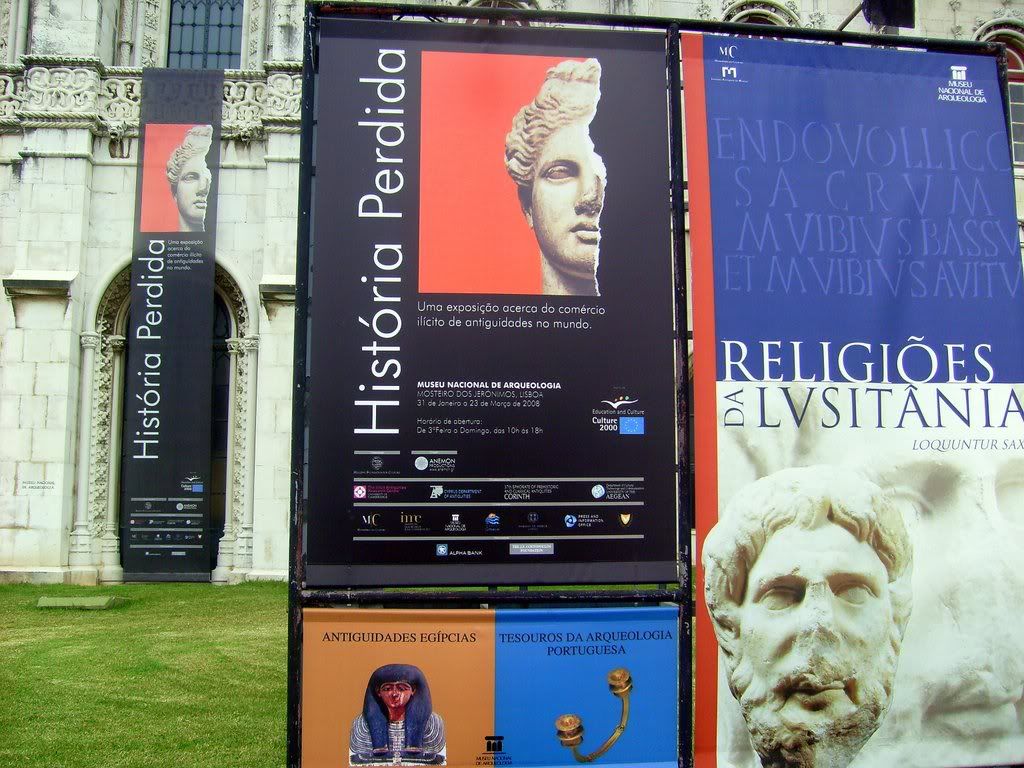
Front door
The National Museum of Archaeology "A centenary institution of Portuguese Culture" located in the Jerónimos Monastery .
Today’s National Museum of Archaeology (MNA) was founded in 1893 by Dr. José Leite de Vasconcelos. In more than a century of existence this Museum became a reference institution of Portuguese archaeology, with regular correspondence with museums, universities and research centres all over the World. The Museum’s collections gather the Founder’s first collections and those of Estácio da Veiga. Many other have been added, some come from other State departments (for example: archaeology collections of the old Portuguese Royal House, integrated in the Museum after the settlement of the Republic; archaeology collections of the former Beaux Arts Museum, incorporated when today’s National Museum of Ancient Art was created; etc.), another ones come from donations or legacies of collectors and devoted friends of the Museum; others come from the intense field work activity developed by the Museum or by other archaeologists; another ones from government dispatches, within the law, whenever archaeological finds in the Country are thought of national value.Besides the exhibitions, the Museum offers society (Portuguese and foreign) several other services. Conceived by its founder to be a kind of "Museum of the Portuguese Man", the MNA still follows the same basic vocation, that is, to account for the history of the settlement of our territory, from the beginning to the foundation of the nationality. It is the only institution in Portugal capable of doing it: because of its collections, its technical resources, its location in the Jerónimos Monastery (actual meeting point of nationals and foreigners), with special prominence to the schools from across the Country, which fully occupy the Museum's education department, yearly.

History Lost: An exhibition about the illicit trade of antiquities in the world.
Institutional organization: Hellenic Foundation for Culture.
Type of exhibition:International Cooperation Exhibition.
The removal of the Parthenon Marbles by Lord Elgin, in 1801, is famous. What is less well known is the extent of the looting of archaeological sites around the world today: that the majority of antiquities, which appear for sale on the art market, have been illegally dug and smuggled out of their country of origin.The steadily increasing number of museums in the U.S. and the rising demand for antiquities by private collectors in Europe, North America, Japan and Australia have exhausted the supply of legal antiquities. Few objects of the old collections, built up during the eighteenth century, are appearing on the market. The trade relies mainly on trafficking, theft and pillage. In contrast to the Elgin Marbles, the context and provenance of these objects will never be known. We will never know why they were created and what they have to say about our past. Taken out of context, they have lost their historical value. The escalating plunder of the world's archaeological heritage has not gone unnoticed by the international community. In 1970, UNESCO adopted the "Convention on the Means of Prohibiting and Preventing the Illicit Import, Export and Transfer of Ownership of Cultural Property". In 1972, after its ratification by four countries, the Convention went into effect. Today, 109 countries have adopted the Convention. The U.S. signed in 1983, Great-Britain in 2003.After the UNESCO Convention, museums, collectors and dealers still trading in antiquities of unknown provenance, began to use forged documents to cover their activities. As it was becoming increasingly difficult for western museums to buy antiquities, new large private collections were formed, containing previously unseen antiquities of unknown provenance. These collections, in turn, were exhibited, borrowed or bought by important museums in the West. Although the acquisitions made by large museums have been widely criticised, looting in Africa, Asia and Latin America has become more destructive due to the rise of art market prices. In Greece for example, due to the extensive looting of the Cyclades, we have lost the chance to find out more about the use and role of Cycladic idols and the history of these islands during the Bronze Age. Similarly, the destruction of Cyprus's cultural heritage intensified after the Turkish invasion. The antiquities trade spiralled out of control in the occupied northern part of Cyprus. It is estimated that 15,000 to 20,000 Byzantine icons, mosaics and wall-paintings have been stolen.






9 comments:
A minha última visita a Lisboa, foi ao Oceanário.
Great post, its a huge problem the stolen pieces of history. Saludos.
Que artigo interessante!
A proxima vez que estiver em Lisboa irei visitar o Museu.
Batoteira ... mas pelos vistos resultou!
Thank you, this is very good information. I did not realize this was a large problem. Perhaps many people in the world do not know what is going on with the theft of antiquities.
A nice way to highlight a big problem.
This is an excellent post, very well-researched. (Not to mention great photos.) I also posted about this when a museum in Pasadena was raided by the FBI and the IRS.
http://tinyurl.com/23wz9r
Unfortunately, American museums have been among the worst. Perhaps they don't do the actual stealing, but they buy. And that encourages the crime.
These items are the heritage of the people of the world. For any museum to participate in such crimes is unconscionable.
My goodness! What news! Thank you for telling us and what an interesting post this is. Terrific links too! Thank you so much!\\
Pat
Guelph Daily Photo, My Photos.
A brave post!
There is a great problem with stolen monuments,its a stolen History.
Thank you.
Post a Comment